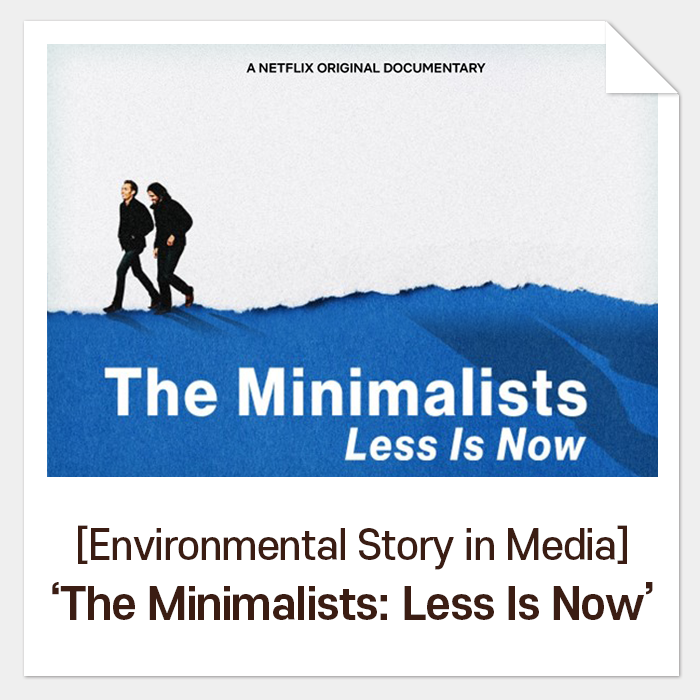[Special Article] Everything About Plastic and Our Choice for Tomorrow 5. Invisible Threat, Microplastics
According to the report released by New Castle University in 2019, we eat plastic that is equivalent to a credit card per week. Plastics produced in 2015 were 320 million tons and 146 million tons of them, accounting for 42%, were used for packaging which mostly ended up in the environment as microplastics.
Researchers are warning that these can be a greater
threat to the ecosystem than the waste that is easily spotted with our bare
eyes. How are the microplastics generated and why should we be alert? We will
check the definition of microplastics and their hazardousness and how we should
act.
What are microplastics?
Microplastics are a term for solid plastic particles with functional additives in a size of 100nm – 5 mm and the term was first used by Dr. Richard Thompson in 2004. Depending on how they are produced, microplastics are categorized into primary plastics and secondary plastics. Primary microplastics refer to small plastic particles that are intentionally added to toothpaste, detergents, and scrub products for abstersion while secondary microplastics are generated from disintegration by sunlight, temperature, and friction.
Why should we focus on microplastics?
According to data, plastics accumulate in nature and are
not composted for at least decades if not centuries. Especially, microplastics
are known to affect the entire ecosystem seriously.
Microplastics are not filtered by defecator that they are eaten by planktons and enter the human body through crustaceans, fish, and etc. In addition, many data have been reported that the air we breathe and water we drink are also greatly contaminated with microplastics as well. The research team from New Castle University found significant microplastics in tap water, groundwater, surface water, and even in bottled water and EcoLab team led by Steve Allen was able to find microplastic samples in the mountain of the Pyrenees that is 120km away from the nearest city.
Plastics tend to adsorb organic pollutants that it is
likely for microplastics to contain some harmful pollutants while they are
floating in the air or water. In addition, they possibly contain some chemicals
such as plasticizers, flame retardants, or antioxidants, which are added for
easy converting and advanced functions when manufacturing plastics. Researchers
say that microplastics with such chemicals may destroy the immune system, cause
inflammation in our organs and cells, and even become carcinogens. In fact,
there was a report showing that the mice with a high accumulation of
microplastics in their bodies suffer from inflammation in the small intestines
and their sperm count decreased.
WHO or WWF also show great concern about the impact of
microplastics on human health. Even though WWF did not deny that the influence
has yet been clearly analyzed, they insist that abundance of marine life has
been dying due to the microplastics accumulated in their digestive organs or
respiratory tract.
The more packaging, the more secondary microplastics
The food packaging has been sharply increased due to COVID19 and it is also a major cause of secondary microplastics. Carmen Morales’s research team from Cadiz University in Spain published a report in Nature Sustainability that 8 out of 10 wastes found near rivers and oceans are made of plastics and 44% of these wastes are related to take-out food packaging. Especially, disposable bottles, food containers and wrappings, plastic bags account for most of them that it seems essential to replace plastics with environmentally friendly materials for food packaging.
As plastic-free movement is accelerated, ‘paper/fiber-based packaging’ is suggested as an alternative. However, we should realize that most of the packaging is lined with plastic for barrier functions such as waterproof and grease resistant properties. It means that the baseboard part may be recycled or composted but the plastic coating still remains in nature as microplastics.
Microplastics silently but sharply penetrated our
life. What should we do?
According to the report of Dr. Zahra Sobhani from the Global Center for Environmental Remediation, there will be 265 million tons of plastics accumulated in the environment by 2060 and 13.2% of them will become microplastics.
Then, how is the world acting toward this critical and urgent situation?
As acknowledging the urgency, the U.S. passed the bill to ban microbeads in cosmetics and personal care products in 2015 and South Korea also enforced the ban to add the primary microplastics on cleaning and detergent products this year. The EU asked cooperation to ECHA to plan out the regulation on microplastics and as of 2019, they prohibited the production and use of 10 disposable plastic items including food packaging and oxo-degradable products and promote sustainable alternatives.
The research on microplastics already started years ago, but it is still challenging to provide clear evidence on how serious and hazardous they are. However, everyone agrees that there should be more various studies and in-depth researches as plastics are deeply related to our daily life.
Many companies have been developing technology in regard such as filtration systems in wastewater, substances to attract microplastics, magnets for microplastics, and biodegradation by marine organisms. Surely, they may need consistent attention and financial support from governmental organizations to drive practical performance.
As regulating the production of primary microplastics, we should also take rapid action on the plastic waste abandoned in the environment. As for the food packaging industry, there should be efforts to switch to environment-friendly materials that are repulpable and compostable so that we can minimize resource waste. Finally, consumers should be aware of genuine environmentally friendly products in their effort to reduce disposable consumption.
It may seem that we have come too far, but wouldn’t it be the time for every one of us to listen to our conscience and cooperate for our nature?










Comments
Post a Comment